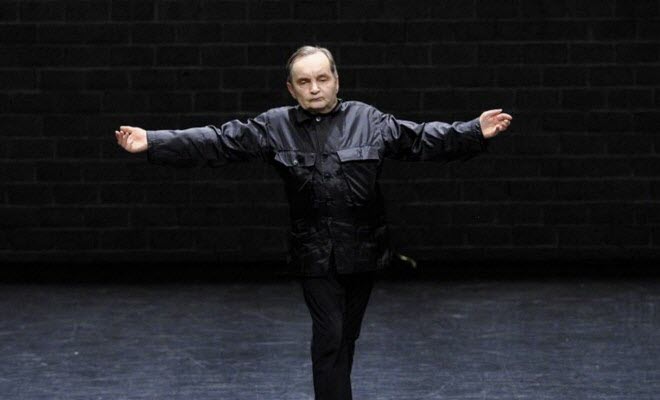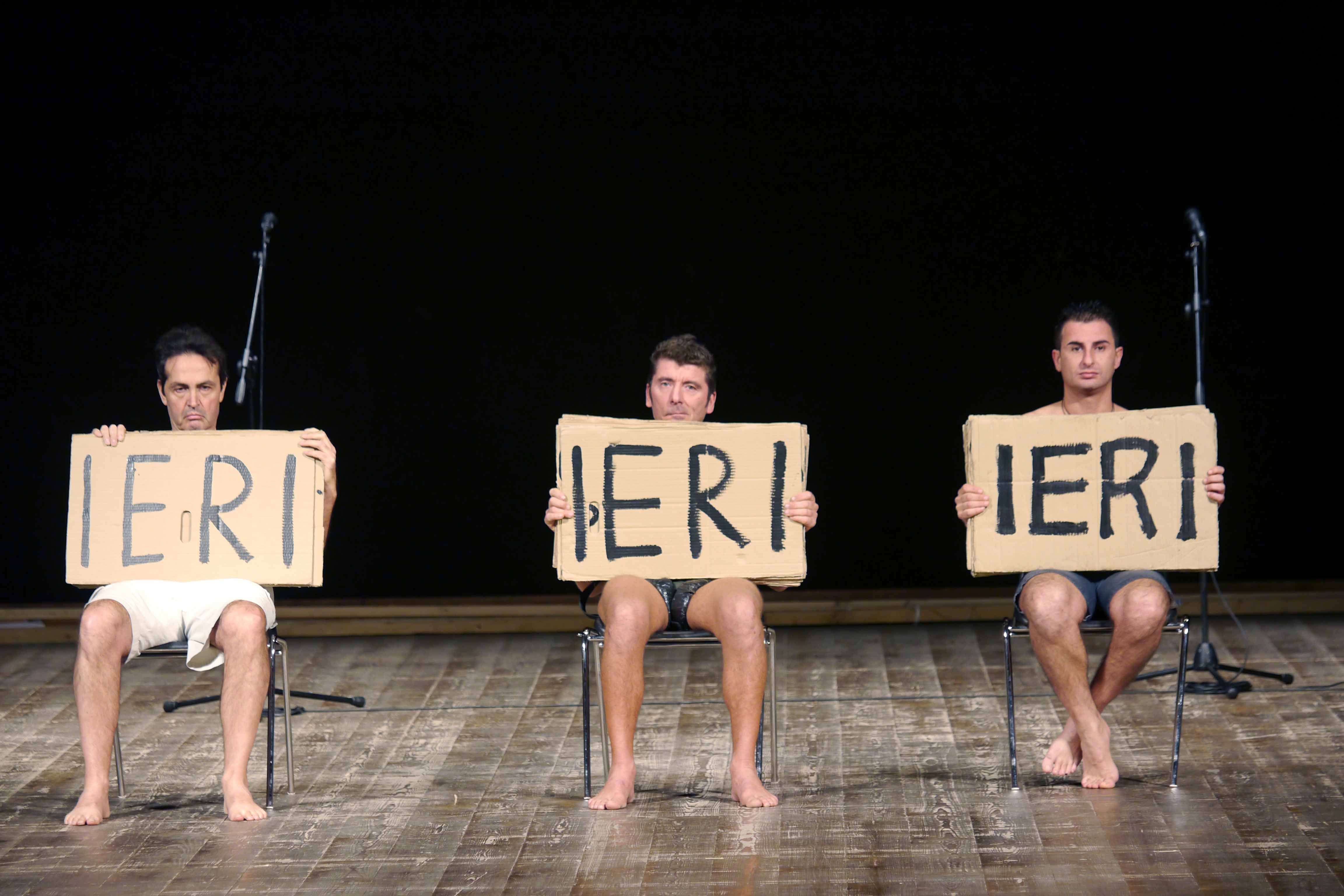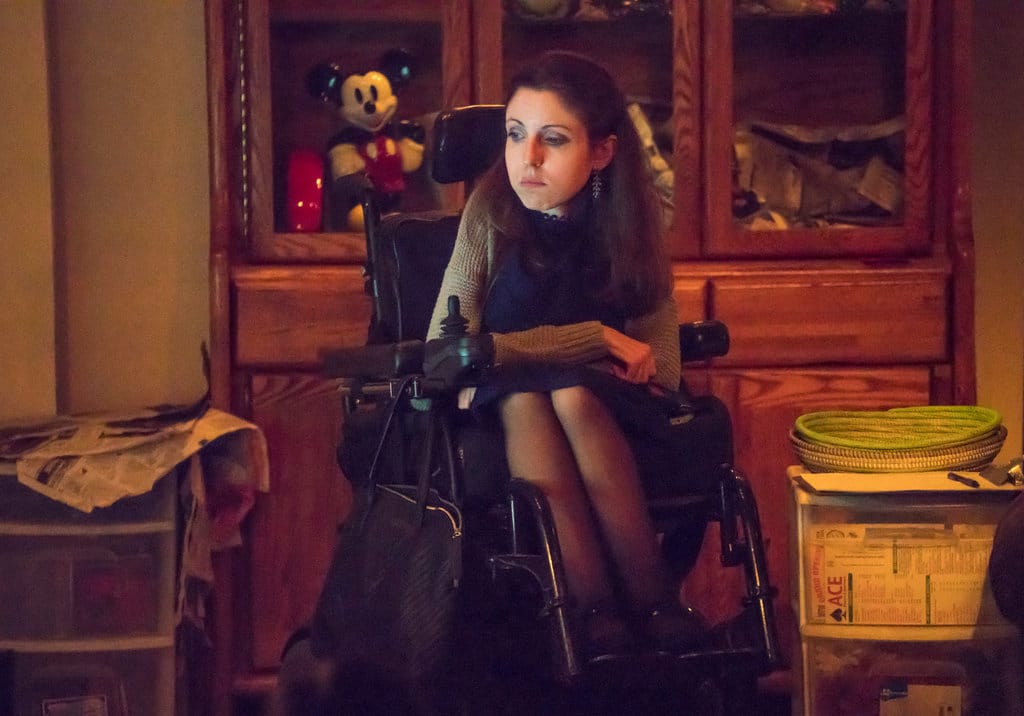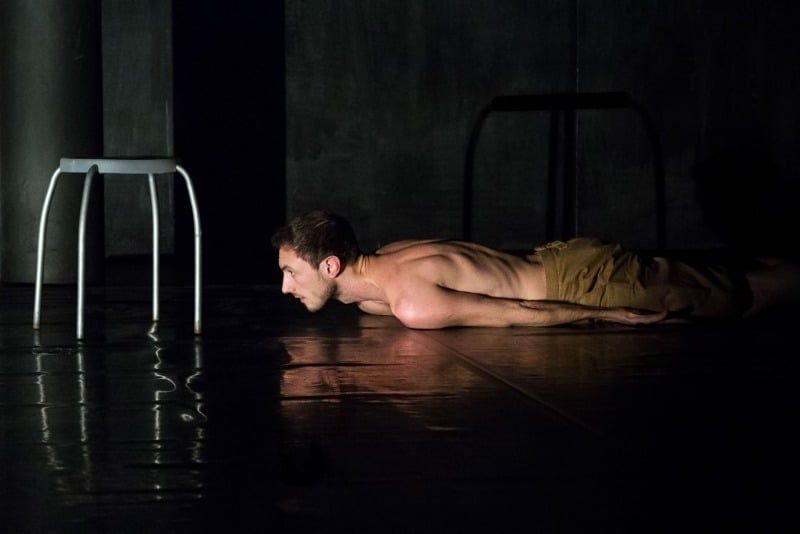These are excerpts of the website description of Babylonia Teatri's show Pinnochio which was part of the official selection of Biennale Teatro in Venice in 2016. Three medical coma survivors – Paolo Facchini, Luigi Ferrarini, Riccardo Sielli – are exposed half-naked on stage, interrogated by the powerful and invisible voice of the director who asks them to shamelessly share quite intense personal stories from before and after their accidents as well as memories from the time in hospital. Controversially, the metaphor of Pinnochio, the wooden doll that is brought back to life, is used in relation to their broken bodies which are revived after near-death experiences. The piece ends with the oldest man, tied in ropes, lifted high above the stage, like a wooden doll, sort of liberated from the down-to-earth pain but also completely helpless in the air, suspended from his own life by the invisible power of fate. The audience reaction was impressive – some people were outraged and stormed out of the venue, while others were brought to tears. It was exceptionally clear that that the work is powerful and even shocking, while at the same time extremely problematic.
The divisive discussions continued in the bars of Venice in the days to follow with people defending and attacking the show. The attackers insisted that the Pinnochio metaphor also accidentally reveals the way the company treats its performers. Asking disabled non-professionals to reveal both physical and emotional vulnerabilities for shock value can be seen as a sort of contemporary freak show, as a way for the directors to push their career forward and lastly, as an attempt to make the unfamiliar experience of the other a little more consumable. The performers “are given a voice” but are they truly empowered if they immediately sink back into invisibility right after the end of the show, replaced by others with even more shocking stories and bodies for the next production? In the same festival the company also conducted and publicly presented a workshop with people with Down syndrome, people of short posture and blind people as a first step towards a new production, and the disabled bodies stood in stark contrast to the able-bodied director conducting them. The value of their documentary, non-scripted stories maybe comes automatically from their identity, however it's not they who reap the rewards.







